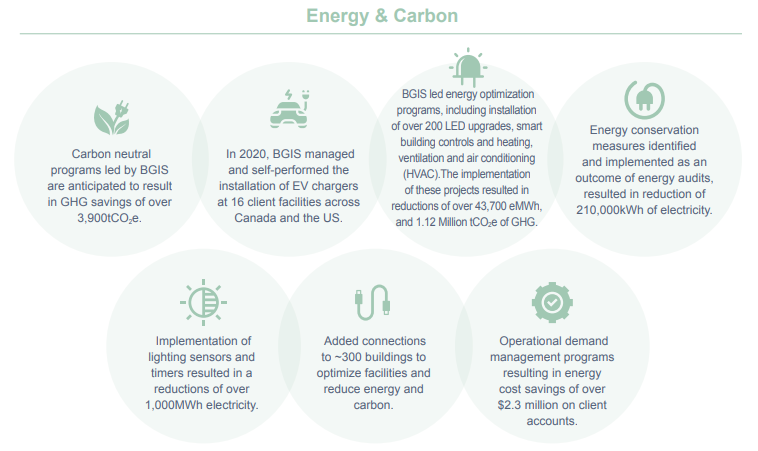Patty Anderson, VP Critical Environments, BGIS
The “greening” of data centers and the importance of environmental, social, and corporate governance are increasing as the easy energy efficiency wins are ending. However, data center energy consumption increases organizational costs and CO2 emissions. Greening data centers can decrease these negative impacts and as a result, examining the antecedents to approaches for greening data centers to facilitate their widespread adoption is critical. (Karanasios et al., nd).
Sustainability portfolio-wide is becoming a focal point as data center companies have the opportunity to lead by introducing new technologies and sustainable processes to reduce the future damage and react to the current climate conditions experienced globally. By committing to reducing energy consumption, natural resource use, and greenhouse gas emissions in our clients’ portfolios. At BGIS, we are relentlessly driving significant change as we lead programs and initiatives to reduce GHG emissions for our clients on average by 1.5% annually.
Neglecting sustainability means neglecting the environment. Wildfires impact areas globally, in the US on the West Coast, across Canada, in Australia. At the same time, powerful hurricanes along the Gulf Coast and tropical storms in the North East indicate that climate change is a current impact. Total global economic damages from disasters as a share of GDP was 2% through 2010-2020. (Ritchie, H., & Roser, M. 2021) In 2021 Natural Disasters cost the US alone $145 Billion. (Smith, A. B., 2022) We can never hope to stop these natural occurrences completely but can do our best to help prevent them by implementing sustainable practices.
BGIS released our 2020 ESG (Environmental, Social and Governance) report, which addresses the activities of global operations, enhances transparency and incorporates the adoption of measurable reporting standards, further demonstrating our commitment to ESG and our support and alignment of our customers. We recognize that as the buildings and construction sector accounts for 38% of global energy-related CO2 emissions, we, as building operators and managers have a responsibility to take action to transition to a low carbon economy. Maintaining 1.5°C change in global temperature will reduce the impact on sea levels, species loss and extinction, marine and land ecosystems, and the impact on human health, livelihood, food security, and economic growth. To view our ESG report, click here.
BGIS Performance of Key Sustainability Initiatives



The greening of data centers is an essential step in sustainability. Through constant improvement in technology and business practices, we hope to curb the harmful effects of greenhouse gasses.
For more information contact Patty Anderson, VP, Business Development [email protected]
References
Karanasios, S., Cooper, V., Deng, H., Molla, A., & Pittayachawan, S. (2014). Antecedents to Greening Data Centres: A Conceptual Framework and Exploratory Case Study. Greening data centres: The motivation, expectancy and ability drivers. Retrieved 2022, from https://www.researchgate.net/p...
Ritchie, H., & Roser, M. (2021, June 3). Natural disasters. Our World in Data. Retrieved February 28, 2022, from https://ourworldindata.org/nat...
Smith, A. B. (2022, February 17). 2021 U.S. billion-dollar weather and climate disasters in historical context. 2021 U.S. billion-dollar weather and climate disasters in historical context | NOAA Climate.gov. Retrieved March 7, 2022, from https://www.climate.gov/news-f...(%2410.9%20billion).
(2021). Sustainability & Social Responsibility. BGIS. Retrieved March 21, 2022, from https://www.bgis.com/about-us/...

